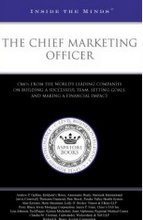 A strong brand helps to communicate that a company and its offerings are relevant and uniquely able to meet customer needs. Most companies today pour millions into brand-building campaigns to generate that external awareness, which in theory can speed up the sales cycle. This has become the accepted norm, taught to us by the very advertising agencies we hire.
A strong brand helps to communicate that a company and its offerings are relevant and uniquely able to meet customer needs. Most companies today pour millions into brand-building campaigns to generate that external awareness, which in theory can speed up the sales cycle. This has become the accepted norm, taught to us by the very advertising agencies we hire.But all this great awareness can come crashing down on you with one reputation disaster online.
Good and bad reputations are opposite sides of the brand coin. And the ability of consumers today to share their opinions of your brand with just a click of a mouse levels the playing field for all and puts your brand in constant peril.
A solid reputation reflects the partners you do business with, the strength of your management team, your company’s financial performance to date and, ultimately, the types of employees you hire and will hire in the future. But literally millions of customers and prospects engage in social communities on the Web today. Facebook alone has 50 million community members, with over half of them logging in daily! Couple that with the ease and ability to create a quick video or podcast, or post a negative comment on a blog, and you have a recipe for reputation disaster.
Unfortunately, when a reputation disaster occurs, it is becoming more difficult for your PR team to execute using the usual crisis management playbook, because the type of media, placement of media and approach to each medium differs. This fragmentation means it will become increasingly difficult to neutralize criticism and restore reputations when something happens.
Additionally, the Internet already has built-in, automatic reputation ranking systems. Currently examples are Google for companies and eBay for vendors. These ranking engines are quickly becoming extremely effective ways for people to determine how reputable your company is before deciding whether to do business with you.
The bottom line: As media continue to fragment with the explosion of yet more social networks, aggregators like Google will become increasingly important in helping users decide whether or not to do business with you.
So what is a company to do?
I recommend a three-step approach to reputation management called “MRO”:
- Monitor – Companies should designate an employee or hire an external service to monitor, moderate and drive positive discussions.
- Respond – Technical staff should be designated to respond to any product or support issues that arise from communities and take the lead in responding with action plans to any negative sentiments that develop.
- Optimize – Companies need to proactively optimize their reputation online over time by exploiting the positive aspects of their brand (an example here is GE, whose Ecomagination is demonstrating the company’s commitment to keeping the environment clean).
Monitor gives you a way to see and engage in conversations before they get out of control. People will be a lot more polite online when they know you are listening. The challenge is learning about conversations that arise quickly. This is where you need reputation bulldogs, who can be out there watching all the time.
Respond gives you a dedicated point person internally who can talk about your product or service with authority and provide clarity on how you might resolve an issue. As I said above, this should be a technical person rather than a communications person. This will convey the company’s commitment to address the issue.
And finally, Optimize. Optimizing your reputation in the marketplace means you go beyond just keeping it on track. You invest in the online aspects of your reputation just as you invest in other dimensions of your brand.
Having a strong brand doesn’t mean you have a strong reputation. Ignoring this critical factor is a risk that companies can’t afford to take today.






